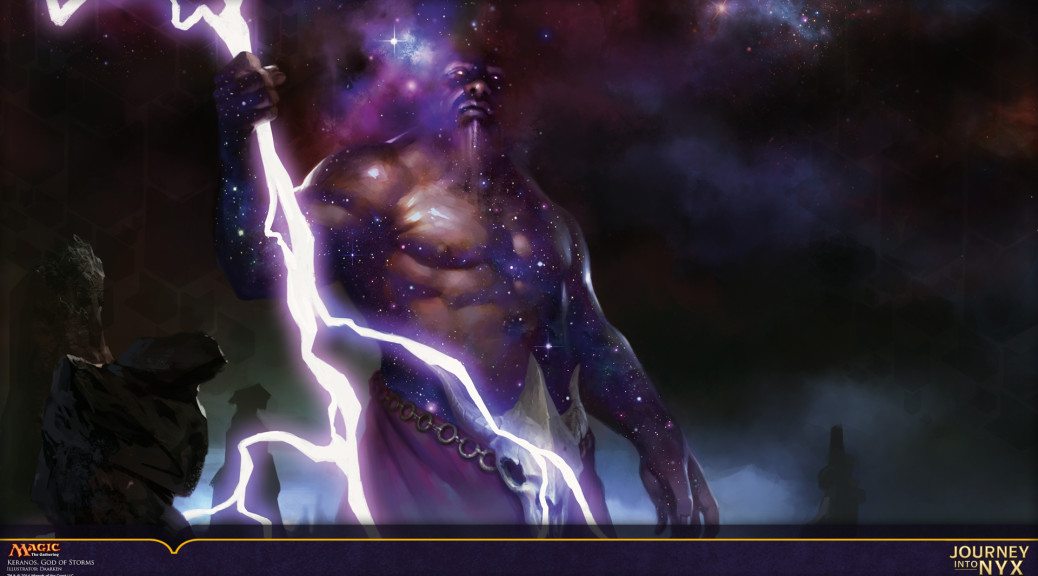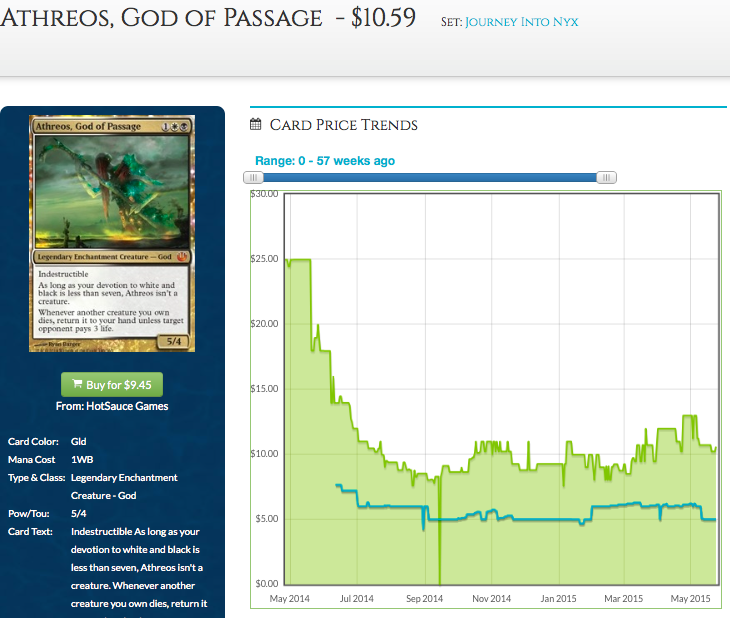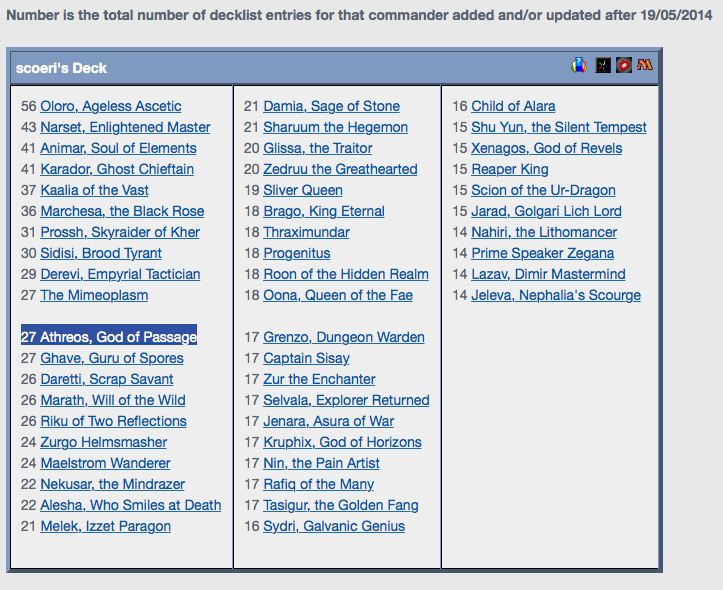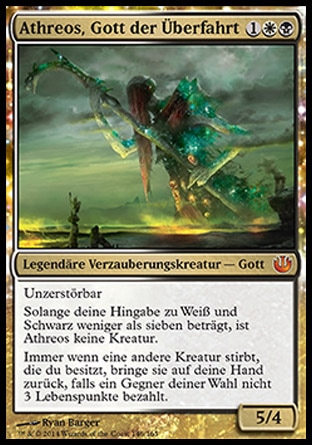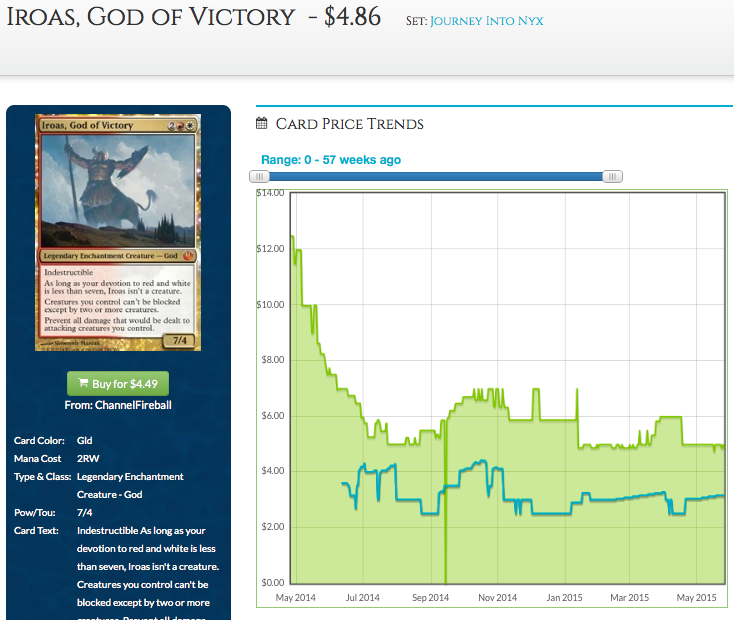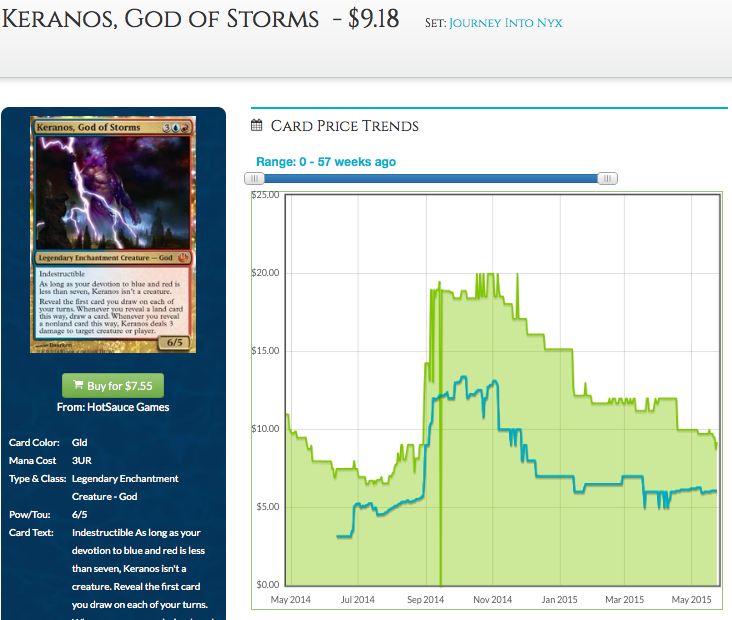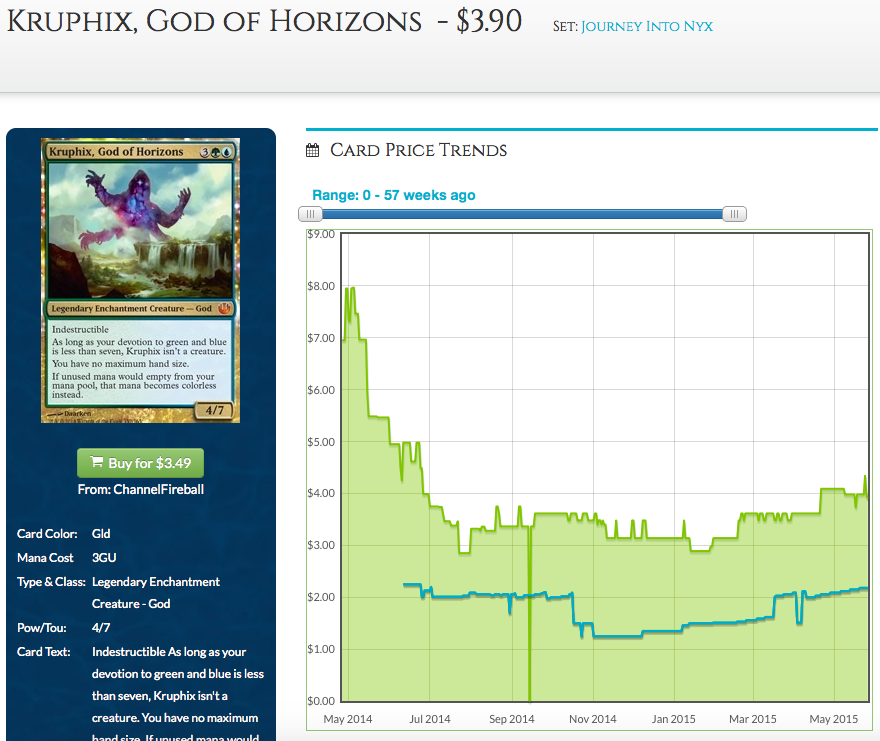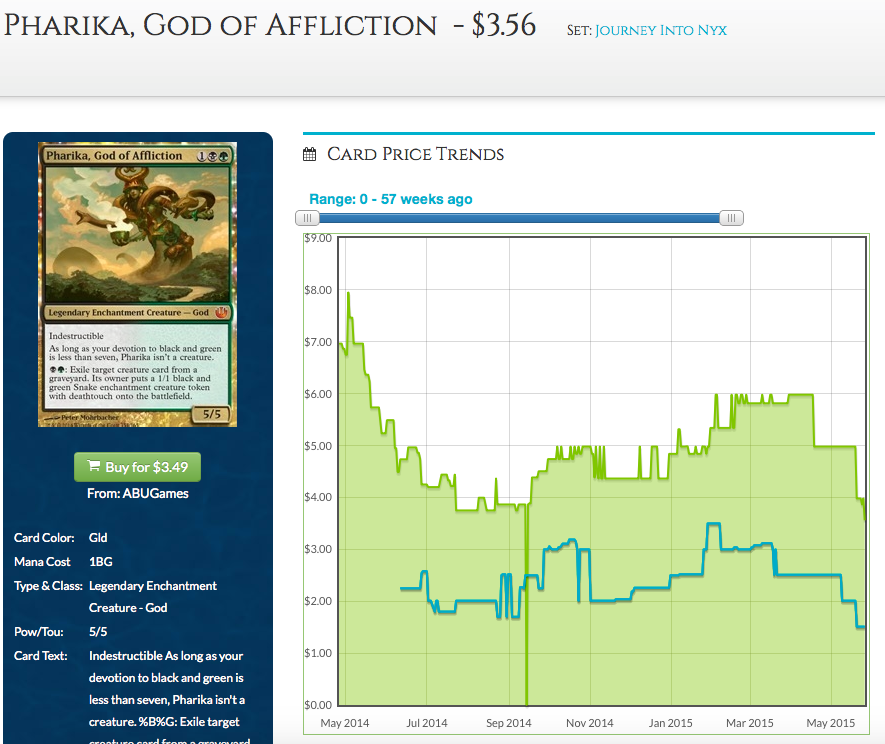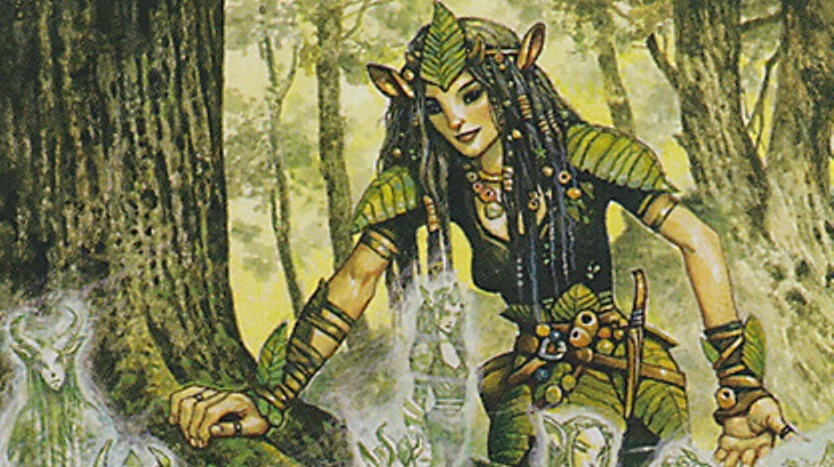By: Guo Heng
Welcome to the final part of the Gods series, where we put the Theros block gods under a financial microscope and attempt to divine their fiscal potential. Part I dealt with the Therosian gods and Part II discussed the Born of the Gods deities. Today we are going to take a look at the final five from Journey into Nyx.
One matter we could all agree on regarding the gods is that they have a lot going for them in the long-term. They are popular in EDH both as commanders and in decks, they have immense casual appeal, and are unique (a card does not get more exclusive than having a special border designed to fit the flavor of the block). All of these factors indicate rosy long-term prospects.
However, not all 15 gods were made equal and some have better potential for long-term growth than others. Let’s take a look at the final five in Journey to see which gods are worth picking up now, which ones to pick up later, and which ones to stay away from altogether.
Athreos, God of Passage
Athreos, God of Passage is currently the most popular god-as-a-commander according to scoeri’s list on MTG Salvation, which compiles decklists posted or updated within the previous 365 days.
Athreos is easy to cast and has an ability that allows for a variety of brews, from the obvious to the wonky, and he is great inside decks, as well. On top of that, Athreos is one of the few gods that is legal in Tiny Leaders, and is probably the best god-leader in the format (Thassa just couldn’t cut it).
However at $10.59 with a 53 percent spread, Athreos is not a good pick-up target today. Unplayed in Standard, Athreos’s price seems to be propped up by EDH and casual demand coupled with his scarcity as a small, third-set mythic. It’s probably best to wait for rotation to see if Athreos tanks before picking him up. Athreos does not see any competitive eternal format play, so it is unlikely that he would retain his current price come rotation. Same goes for his foils, which are currently priced at $29.43.
I don’t know if there is a market for cards with humorous names, but the German version of Athreos has name that is likely to be the butt of adolescent humor for years to come.
Iroas, God of Victory
One of the cheaper god among the Journey into Nyx pantheon, Iroas, God of Victory fits more as one-of-the-99 in an EDH deck rather than being at the helm of the the deck. His ability is unassuming as a commander and pales in comparison with other aggressive Boros commanders like Aurelia, the Warleader or Jor Kadeen, the Prevailer. Iroas is not a god I am keen on picking up now, at rotation, or at all.
Having said that, Iroas does have a relatively low spread of 35 percent at the moment. Like Mogis, Iroas is a solid example of casual demand propping up the price of a mythic that sees virtually no competitive play. Nevertheless, I would rather spend the money other more popular gods like Xenagos, God of Revels or Purphoros, God of the Forge.
Keranos, God of Storms
Ah, Keranos, God of Storms. He started out at a lowly sub-$10 before storming up all the way to $18 when we realized he is really good as a one-of sideboard card in Modern Twin variants and Jeskai Control and Legacy Stoneblade, Grixis Pyromancer, and Miracles. Among all the gods in the block, Keranos is the one with the highest growth potential and ceiling due to the fact that he is an eternal sideboard staple. He may only be a one-of in the sideboard, but he is a small, third-set mythic that is extremely hard to reprint (out of something like From the Vaults: Gods).
Kerns finally dropped back under $10 late last month and is sitting at $9.18 as of writing. Although his price looks to be heading down, I would start picking him up now, in trade or cash. Eternal staples tend not to drop much upon rotation. At most, I suspect Keranos would probably drop another $1 or $2—that is, if he continues dropping at all. On the other hand, Keranos stands to double in price in the medium to long term. Keranos currently has a spread of 34 percent, indicating a good deal of demand for him. Another reason to pick him up right now is that Keranos may not be easy to find due to his scarcity and a possible bump in demand as the Modern season kicks in.
Kruphix, God of Horizons
One line: buy into and trade for Kruphix, God of the Horizons right now. Kruphix really shouldn’t be the second-cheapest Journey into Nyx god. Kruphix is one of the most popular gods that is played as commander. She is Omnath, Locus of Mana on steroids. Granted, she is not as aggressive as Omnath, but she more than makes up for that by being nigh indestructible and giving you access to blue. It would be a shame if your Omnath leaves the board while you have a gigaton of green mana stored in the Omnath Bank. Kruphix seems like the safer mana storage option. Plus, blue gives you access to Prophet of Kruphix, which is pretty insane in a Kruphix deck as Jason E Alt (@jasonEAlt) pointed out.
At $3.90, I would not bother to wait for rotation to pick up Kruphix. I don’t think she will drop much or actually drop at all, as her price seems to be growing slowly since late January. Kruphix is another god with a high potential for long-term growth and a high ceiling. Being a mythic from a small, third set helps.
Kruphix’s foils are at $19.53 at the moment and I would wait until rotation before picking these up. There was a sharp drop in the buylist price for foil Kruphix in mid-April, and it currently has a 49 percent spread. It should be safe to wait until rotation to see if Kruphix’s foil price drops any further.
Pharika, God of Affliction
Pharika, God of Affliction is the only god in the Journey pantheon that is seeing Standard play at the moment (well, the only god in the whole block, actually). She is played as a one- or two-of in Sultai Megamorph, Abzan Reanimator, and the cute-but-somehow-works Chromantiflayer. She sees no play outside Standard and she is only mildly popular in EDH. Her ability is not splashy, but it allows for a lot of political wriggling in multiplayer EDH, if you are into that sort of stuff.
I would stay away from Pharika at the moment. As with most Theros block Standard staples, her price is dropping in anticipation of being relegated to the bulk box after rotation. Pick her up then. I don’t think her EDH appeal is sufficient to drive her price up anytime soon.
TL;DR
- Wait for rotation to see if Athreos tanks any further before picking him up for long-term keeps.
- Keranos is a good pickup right now despite the fact that he is relatively pricey. He looks set to be a multi-archetype eternal sideboard staple.
- Casual demand for the Theros block gods is reflected in the peculiar price of Mogis and Iroas, neither of whom see any competitive play and are not exactly popular EDH cards.
- Avoid Pharika right now if you do not wish to be afflicted with a case of badspecitis.
- Hoover up any Kruphixes you can find. A price of $3.90 is too cheap for one of the most popular god-commanders.
That’s it for today! Share your thoughts below or catch me on Twitter at @theguoheng.
